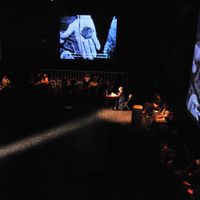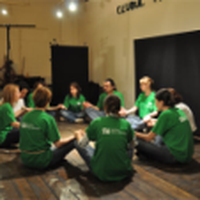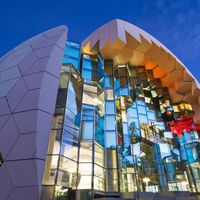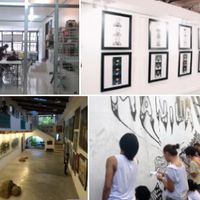#peripheries: Reinventing Industrial Heritage as Artistic Spaces in Transylvania | Romania
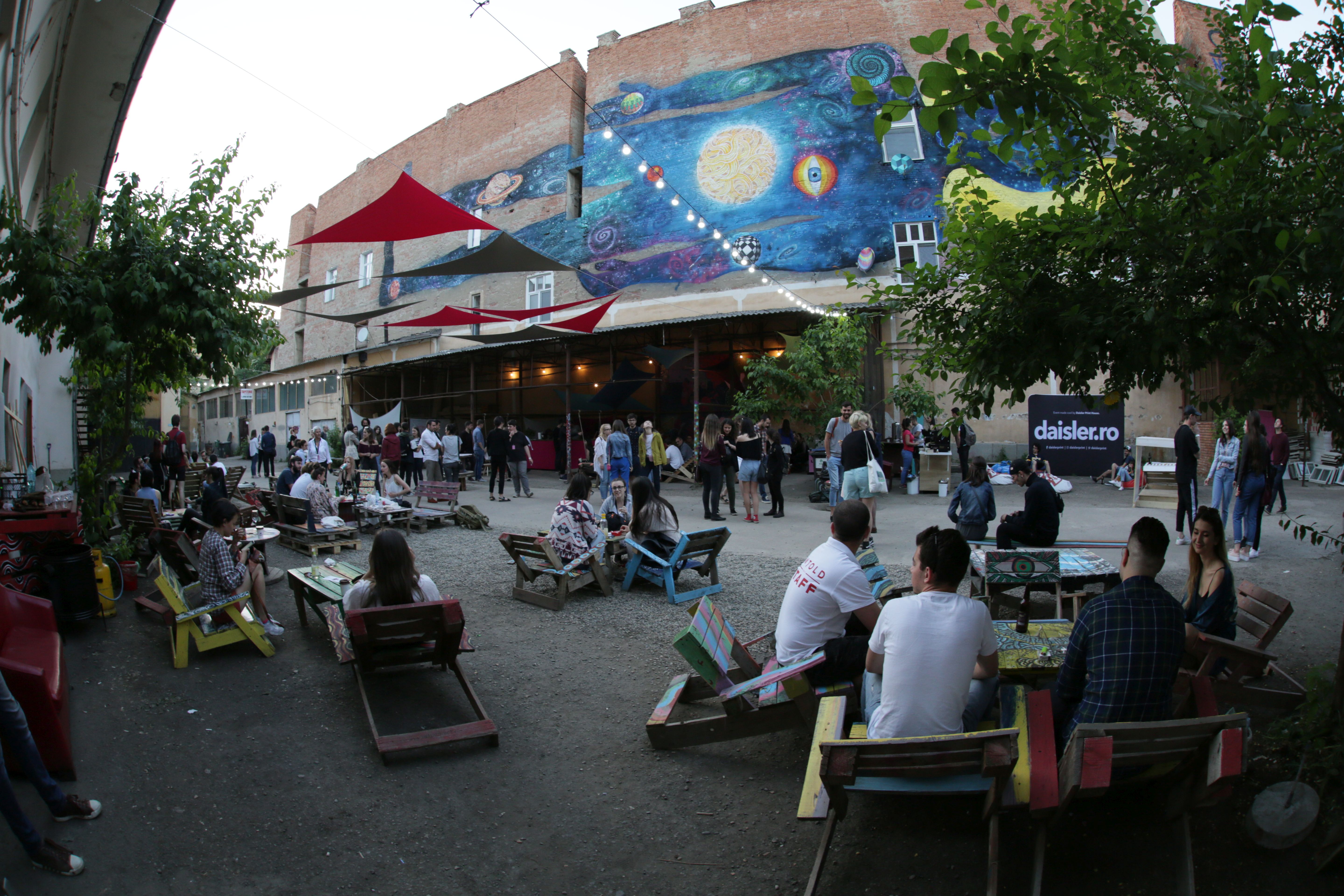
culture360.ASEF.org is featuring a series of articles on the topic of #peripheries. The #peripheries have been regarded as being in the geographical margin, distant from the capital cities and cultural centres of countries. With an ongoing decentralisation trend, through this series of articles, we will look at various arts endeavours by artists, cultural professionals and art organisations who operate or occupy the peripheries in an urban society and the role that the arts play. In this article, Andrada Coos explores the artistic spaces that have emerged in regional cities, such as Cluj-Napoca and Timisoara in Romania.
Like all communist countries behind the Iron Curtain, Romania underwent a rapid industrialisation process. Communist economic policies transformed it from an agricultural country into an industrialised one, with 30% of its population moving from the rural areas to cities to work in the vast new industrial sector.
Thirty years after the fall of communism in December 1989, Romania’s landscape is riddled with the ghostly remains of these industrialisation efforts. While some factories, like the iconic Dacia car manufacturer that became a subsidiary of Renault in 1999, were saved through privatisation and foreign investment, others were not so lucky. Many shut their doors in the 90s, never to be opened again. Others continued to operate with a skeletal workforce still dreaming of their days of glory.
Claiming industrial spaces as places of artistic expression is not a new phenomenon: from East Berlin’s famous derelict buildings of the 90s teeming with artists, musicians and squatters to the creative community flocking to Hong Kong’s former manufacturing district, Kwun Tong, artists and curators have often seen the potential of industrial spaces: generously sized, oftentimes out of use and cheap to rent, they make ideal blank canvases for creative expression.
In Romania, with art found mostly in museums and a contemporary art scene just beginning to blossom, gallery owners outside the capital have begun to find their wings in these old abandoned spaces, giving them a second life as places where artistic endeavours can flourish outside the mainstream.
H33: Reclaiming the post-industrial urban landscape for the community
Cluj-Napoca is one of Romania’s fastest growing cities: once famous as a student town, its phenomenal economic development in the last twenty years has attracted an educated young middle class hungry for entertainment and the arts.
Boasting an international film festival already in its 18th edition and two award-winning music festivals, Cluj-Napoca has also begun to look beyond traditional exhibition spaces to promote the work of up-and-coming artists in new locations.
One such space is H33. Hidden behind an unassuming metal gate at 33 Horea Street – hence H33 – in Cluj-Napoca’s historical centre, the façade gives way to a spacious courtyard with ample lounging space with hand painted wooden pallet chairs and what looks like an impromptu bar strung up with lights.
The wall of the neighbouring building looming above the courtyard, was transformed by street artists Kero Zen and Raw Cocu into a canvas: their larger than life MicroMacro Cosmos Man stretches across its entire length.

H33 Exhibition Space (Photo Credits: Alex Clinci)
Visitors are often surprised when met with this urban oasis: the exhibition space seems, at first glance, to be missing. Soon, however, helpful signs guide them to the gallery: it is underground. Stretching along seven rooms, it was once used as storage space for aging wine in a cognac making factory.
Built at the beginning of the 20th century as an alcohol factory and nationalised during communism, the building was later extended in the 70s and 80s when it was managed by the Central Administration for Vineyards and Wines and produced slibovita, a strong alcoholic drink popular in the Eastern bloc, and cognac.
Privatised during the 90s, the factory closed its doors in 2004. The space then fell into disuse, being occasionally used for storage or rented as store space. Urbannect NGO took it over in 2017 and launched the H33 Social Innovation Hub as a space for cultural community events. They organise debates, exhibitions, performances, theatre, dance, concerts, book launches and more.
“We promote artists that don’t normally have the possibility to exhibit in conventional spaces, offering them the chance to express themselves and support each other,” says Dan Clinci, Urbannect NGO’s president. “We encourage complex multi-disciplinary happenings that artists from different fields can contribute to and build interconnected and multifunctional events. We see the city as a tightly-knit, living mosaic.”
Flora Sopa, a young international Romanian artist, headlined an exhibition at H33, entitled Form and Distance in September 2018. Her creations, shaped by sound and light, were a perfect fit for H33’s spacious cellars.
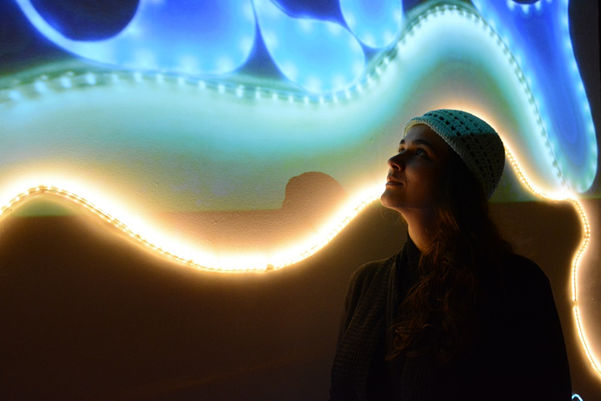
Artist Flora Sopa with her Ephemeral Light Painting 5 (Photo Credits: Flora Sopa)
“Exhibiting at H33 allowed me to work with an extremely resourceful space that offers great room for art installations, especially light art,” says Flora Sopa. “By taking advantage of its architectural characteristics, I created an entire light event last year in celebration of the International Week of the Deaf. My work was wrapped around the correlation between sound and light so I thoroughly enjoyed H33’s dark corners and cave-like attributes.”
And that is exactly what visitors feel when entering H33 – where they were suddenly transported from the laid-back, colourful cheerfulness of its courtyard to an underground world full of dark corners where artists were the only light.
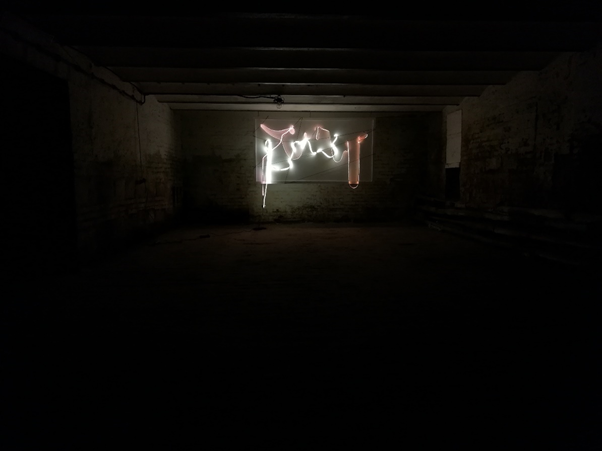
Flora Sopa - Ephemeral Light Painting 1 at H33 (Photo Credits: Flora Sopa)
DIGITAL:CANVAS\: A home for digital artists
Timisoara, the biggest city in western Romania, has gone through a tremendous growth in the last two decades, benefitting especially from the smart application of European Structural and Investment Funds.
Famous as the first European city to introduce electric street lighting in 1884 and the starting point of the demonstrations that lead to the demise of the Romanian communist regime in 1989, Timisoara has a long history as a cultural hub and has recently won the title of European Culture Capital for 2021.
Like Cluj-Napoca, Timisoara is seeing a rise in interest in the visual arts with new galleries popping up across the city to promote the art of local artists both new and established and to welcome international artists. Sometimes though, a gallery is not planned, it just happens.
When the two artists behind art and design studio Artouching, Livia Mateias and Marius Jurca, rented space in the old Azur Lacquer and Paint factory, they were not planning on opening a gallery.
“My husband and I rented and equipped the space at the end of 2017 as a personal art studio, but a short time after, we decided to open it up to the public. We knew from experience the difficulties digital artists faced when trying to put together an exhibition,” says Livia Mateias. “We had already bought all this equipment for our own work and we felt it was a shame to just keep it boxed up and use it only when we needed it. We thought: why not just share it?”
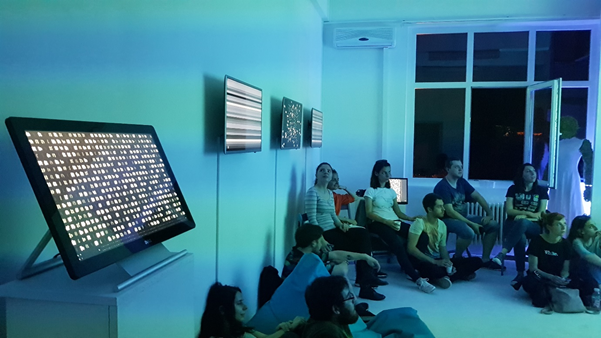
DIGITAL:CANVAS\ interior (Photo credits: Artouching)
DIGITAL:CANVAS\ was thus born, opening its doors for its first exhibition in January 2018. Their motto, “Sharing Pixels with Creators” reflects its aim to help digital artists find a home in Timisoara. They promote 2D and 3D animation, interactive and generative art and audio-visual performances. They also put together One Day Shows, which they consider ideal for the exhibition of digital art, offering maximum public engagement over a short period of time.
The gallery is located on the premises of a squat brick building that once housed the Azur Lacquer and Paint factory. Eugen Farber, a respected member of Timisoara’s community, opened the factory in the 1920s.
Nationalised under the communist regime, it faced difficulties in the 90s, but was saved by Eugen Farber’s son, John. Founder of ICC Industries, John Farber bought back the Azur factory in 2000 and modernised it.
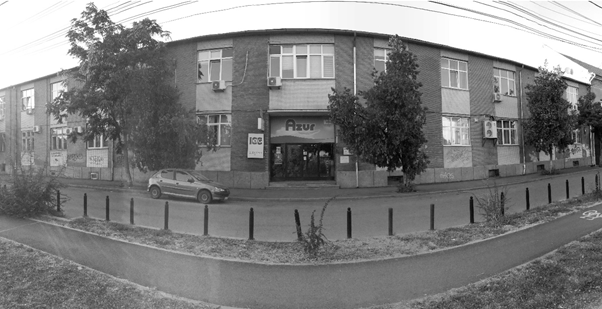
The old Azur Lacquer and Paint factory (Photo Credits: Artouching)
Today, Azur continues to thrive, but has moved to a more modern home in an industrial park on the outskirts of Timisoara. The old factory, still owned by Azur, is home to its official store, but some of the space is rented to small businesses and artists like Livia Mateias and her husband.
DIGITAL:CANVAS\ is a one room gallery, no bigger than a studio apartment. Its walls, a stark white, are canvases meant to allow projections to transform them into works of art.
Japanese Artist Eiichi Tosaki, who has been developing Bimanual Coordination Drawing (BCD) for 30 years, brought his unique artwork to DIGITAL:CANVAS\ in March 2018 in a one day event that was part workshop, part performance, part exhibition.
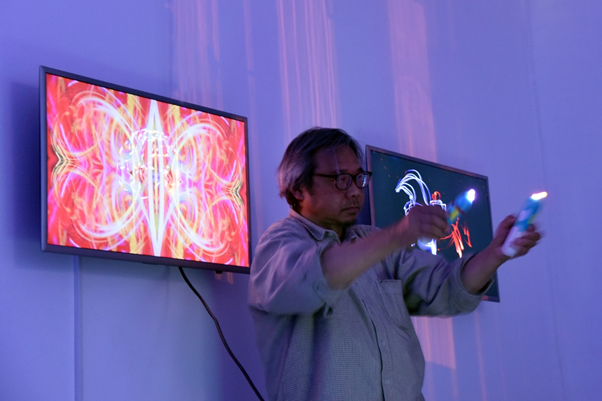
Artist Eiichi Tosaki during his BCD performance at DIGITAL:CANVAS\ (Photo credits: Artouching)
“My experience at DIGITAL:CANVAS\ was a very special one,” Eiichi Tosaki says. “The studio was nicely arranged, escaping a typical ‘white cube’ and generated a very friendly environment. My Bimanual Coordination Drawing presentation and workshop went amazingly smooth. The projection was fantastic and three separate screens showed other artworks of mine. The facility is compact but accommodates any form of artwork and generated a welcoming environment with round corners.”
DIGITAL:CANVAS\ is an unassuming white space. A single room in which screens and pixels bring the digital revolution to the industrial age.
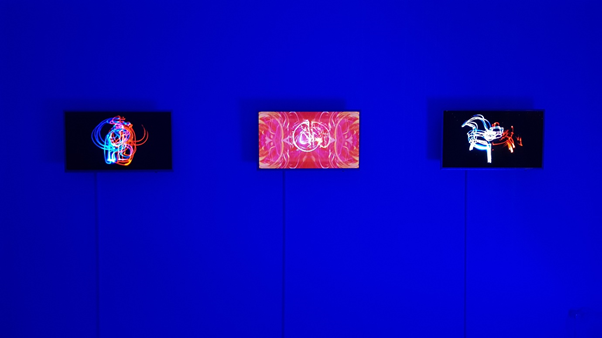
Eiichi Tosaki, From left to right: BCD with LED lights: Multi-knot Klain bottle, collaboration with Mr Kaoru Shindo, Horse and Jockey (Photo credits: Artouching)
This article is written by Andrada Coos, a professional copywriter in the fields of technology, design and space and a published fiction writer both internationally and in her home country of Romania. She was previously an editor with the Jockey Club Design Institute for Social Innovation in Hong Kong and currently works at the European Space Agency’s Centre for Earth Observation near Rome. Her debut novel about student life in Japan, The Beauty of Passing Things, was published in Romania in 2017.
Similar content
25 Jul 2011
posted on
09 Nov 2021
posted on
09 Sep 2010
from - to
22 Feb 2019 - 24 Mar 2019

